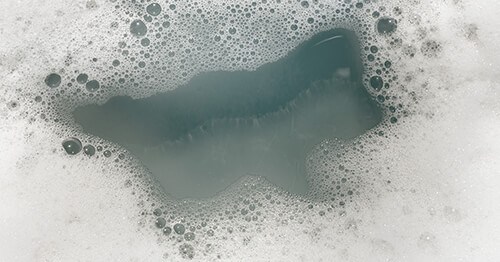Crucial Explanations for Effluent in the Bathtub
Crucial Explanations for Effluent in the Bathtub
Blog Article
The publisher is making several good pointers on Why is There Sewage Coming Up Through the Bathtub as a whole in this post on the next paragraphs.

Sewer back-up in the bath tub can be a traumatic and unhygienic issue for any kind of house owner. Not just is it inconvenient, but it also positions severe wellness threats and suggests underlying issues with the plumbing system. Understanding why sewer is turning up through the bathtub is crucial for taking appropriate activity to attend to the trouble successfully.
Introduction to the Problem
Common Reasons for Sewer Back-up
Clogs in the Sewage System Line
Among the most usual sources of sewer backup is an obstruction in the sewage system line. This can happen because of the buildup of particles, grease, or foreign things in the pipelines, stopping correct flow and creating sewage to support right into your bathtub.
Tree Root Invasion
Tree origins seeking dampness and nutrients can infiltrate sewage system lines via small splits or joints. Over time, these roots can expand and broaden, creating significant damage to the pipelines and leading to sewer backup issues.
Comprehending the Trouble
When sewer starts backing up into the tub, it's a clear indicator of a trouble with the water drainage system. The wastewater that should be streaming far from your home is rather finding its back right into your home, which can cause significant damages and health hazards.
Possible Reasons
Several variables can add to sewer backup in the bath tub. From obstructions in the sewer line to problems with the plumbing infrastructure, determining the root cause is crucial for locating an option.
Aging Facilities
Older homes might have obsoleted plumbing systems that are a lot more prone to deterioration, splits, and degeneration. As pipes age, they come to be more vulnerable to leaks and blockages, boosting the likelihood of sewer backup incidents.
Heavy Rainfall or Flooding
During periods of heavy rainfall or flooding, the drain system may come to be overwhelmed with excess water, triggering backups and overflows. This can result in sewer supporting right into tubs and various other components inside the home.
Signs of Sewer Backup
Foul Odors
Unpleasant odors originating from drains or components, particularly in the shower room, might show sewer backup problems. These smells are frequently solid and persistent, signifying a problem that requires immediate interest.
Slow Draining Fixtures
Bathtubs, sinks, and toilets that drain gradually or otherwise at all could be experiencing sewage back-up. If multiple fixtures are influenced at the same time, it's most likely that the concern stems from a typical factor, such as the primary drain line.
Gurgling Sounds
Unusual gurgling or gurgling noises originating from drains pipes when water is running somewhere else in your house are indicative of air entraped in the plumbing system. This air buildup can arise from sewage backup and ought to be investigated immediately.
Wellness Threats Related To Sewer Back-up
Contamination of Water System
Sewer backup can infect the water system in your home, posturing a major wellness risk to you and your family members. Exposure to contaminated water can lead to gastrointestinal issues, skin infections, and various other ailments.
Mold and mildew Development
Dampness from sewage back-up can develop ideal problems for mold growth in your house. Mold and mildew spores can exacerbate respiratory system issues and trigger allergic reactions in sensitive individuals, making prompt cleaning important.
Spread of Condition
Sewer consists of dangerous bacteria, viruses, and bloodsuckers that can create a range of illness, consisting of liver disease, cholera, and gastroenteritis. Coming into contact with sewage or polluted surfaces places you in jeopardy of infection.
Cleaning Up After Sewer Back-up
Sanitation Procedures
Extensively sanitize and sanitize impacted areas after sewage backup to eliminate dangerous bacteria and stop mold and mildew development. Use proper cleaning products and protective equipment to make sure secure and effective clean-up.
Remediation of Influenced Locations
Fix any type of damage to flooring, walls, or components triggered by sewer back-up. Depending on the degree of the damages, you may need to change carpets, drywall, or various other products to recover your home to its pre-loss condition.
Immediate Actions to Take
Switching Off Water
In the event of sewer backup, it's important to shut off the water to stop further contamination and damage. Situate the main water shutoff valve in your home and closed it off until the issue can be dealt with.
Calling a Professional Plumber
Managing sewage back-up is not a do it yourself task. Call a licensed plumber with experience in managing sewage-related concerns to analyze the circumstance and perform required repairs or clean-ups.
Staying Clear Of Contact with Contaminated Water
Until the sewage backup is dealt with, prevent contact with contaminated water to stop the spread of germs and virus. Wear safety equipment if you have to be in the damaged location and wash your hands extensively afterward.
Preventive Measures
Regular Upkeep of Sewage System Lines
Schedule normal inspections and maintenance of your sewer lines to recognize and attend to prospective issues before they intensify right into major troubles. This can consist of clearing out debris, inspecting for tree origin breach, and repairing any kind of damaged pipes.
Mounting Backwater Shutoffs
Take into consideration installing backwater valves in your plumbing system to prevent sewage from receding right into your home throughout durations of heavy rainfall or flooding. These shutoffs automatically close when water draws back up, safeguarding your residential property from contamination.
Appropriate Disposal of House Waste
Prevent purging anything other than toilet tissue and human waste down the commode to prevent clogs and clogs in the sewer line. Dispose of grease, oil, and other household chemicals appropriately to reduce the danger of plumbing issues.
Why Is Water Backing Up in My Bathtub When I Flush My Toilet?
What to do about a sewer line clog
First, don’t bother with plunging. No amount of plunging will dislodge the clog in a sewer line. The clog is too far away. Plungers are for clogs in the toilet itself, not the sewer line. Plus, the most likely causes of a sewer clog are:
Tree roots Flushed toys or feminine products Grease buildup Those items don’t move easily. And in the case of tree roots, the roots need to be cut out of the pipe and the pipe will need to be repaired.
You’ll need a closet auger. A closet auger is a type of plumber’s snake with a protective cover to keep from scratching the delicate porcelain toilet. If the clog is further down, you may need to remove the toilet or use one of your cleanouts to get to the clog.
We also recommend doing a video inspection of the drain to ensure that the cause of the clog has been completely removed. Otherwise, you could have the same problem again in a few days or weeks.
https://mspplumbingheatingair.com/blog/why-is-water-backing-up-in-my-bathtub-when-i-flush-my-toilet

Do you like more info about Why sewage is coming up through your bathtub? Write a remark further down. We would be pleased to know your responses about this write up. In hopes to see you back again later on. Sharing is good. Who knows, you might be doing someone a favor. We enjoy your readership.
Request An Estimate
Report this page